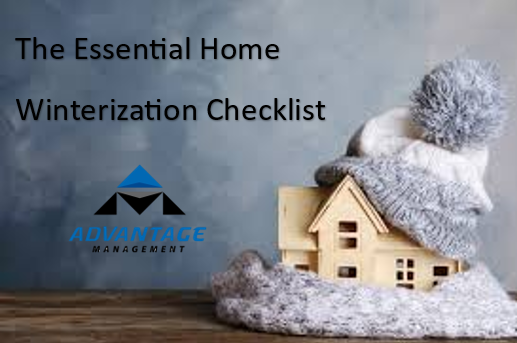Heading out for a winter getaway or planning an extended absence can be both exciting and stressful. While you’re dreaming of your escape, taking a few key steps to properly winterize your home is essential. This preparation will prevent costly damage, keep your property safe, and ensure you return to a comfortable, secure home.
Use this consolidated checklist to prepare your residence before you leave for the winter.
Preventing Water Damage and Pipe Freezing (Critical)
The biggest threat to an empty home in winter is frozen or burst pipes. Take these steps to mitigate the risk:
- Set Your Thermostat to a Safe Temperature: This is the most critical step. Set your thermostat to a low, but safe, range—typically between 55 and 60 degrees. This keeps the interior warm enough to prevent freezing without wasting energy.
- Pro Tip: If you have a smart thermostat, set it to automatically alert you if the home’s temperature drops unexpectedly.
- Turn Off the Main Water Supply: To prevent water damage from unexpected leaks or burst pipes, locate and turn off the main water shutoff valve (if you have one dedicated to your unit).
- Drain the Pipes: After shutting off the supply, open all faucets (both hot and cold) to drain any remaining water from the pipes.
- Insulate Exposed Pipes: Provide added protection by insulating exposed pipes, especially those under sinks, along exterior walls, or in unheated closets. Use foam pipe insulation or heating tape, which are available at home improvement stores.
Heating System and Energy Efficiency
Ensure your heating system runs efficiently and reduce the risk of fire or power issues.
- Clean and Maintain the Heating System: Make sure your furnace or boiler is working correctly. Clean or replace your HVAC filters if they haven’t been changed recently. If possible, schedule a professional service check.
- Inspect for Drafts and Secure Openings: Check all windows and doors to ensure they are securely closed and locked. Seal any drafts or gaps using weatherstripping or window insulation film to reduce heat loss.
- Insulate Windows: Close blinds or curtains to add an extra layer of insulation.
- Unplug Non-Essential Electronics: Unplug electrical appliances, lights, and electronics (e.g., toasters, TVs, chargers) that don’t need to run while you’re away. This saves energy, reduces utility bills, and minimizes the risk of electrical fires or damage from power surges.
- Note: Keep your security system and smart thermostat plugged in.
Safety, Security, and Communication
Prepare for emergencies and ensure you remain connected while away.
- Check Smoke and CO Detectors: Test all smoke and carbon monoxide detectors before you leave. Replace any dead batteries and ensure the units are clean and functioning correctly.
- Forward Mail and Packages: Notify the post office of your temporary change of address and request a mail forward. Also, inform any frequent delivery services or online retailers of your absence to prevent packages from accumulating and advertising your absence.
- Communicate with the Association (or Landlord): Inform your condo association, property manager, or landlord of your plans and provide up-to-date emergency contact information (both yours and a trusted local contact). Adhering to any specific association guidelines for seasonal absences is crucial.
- Arrange Regular Home Check-ins: If possible, arrange for a trusted neighbor, friend, or professional house-sitting service to check on your home periodically. Regular check-ins can identify and address potential issues—like a furnace failure or water leak—before they escalate.
Conclusion
Winterizing your home is a small investment of time that yields immense peace of mind. By addressing the critical risks of frozen pipes, improving energy efficiency, and securing your property, you can leave your home worry-free and truly enjoy your time away.


Recent Comments